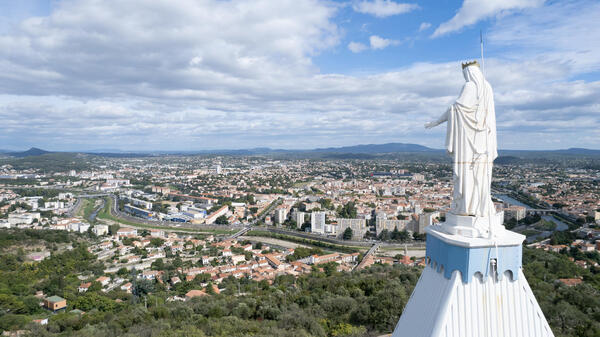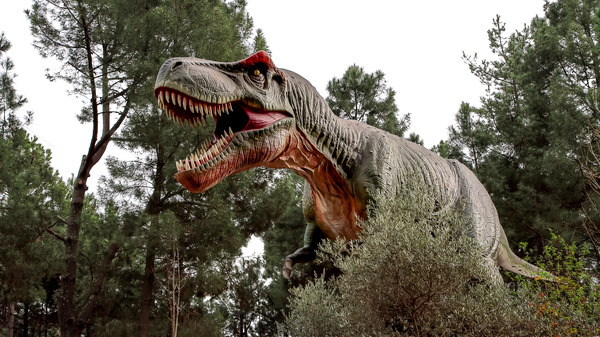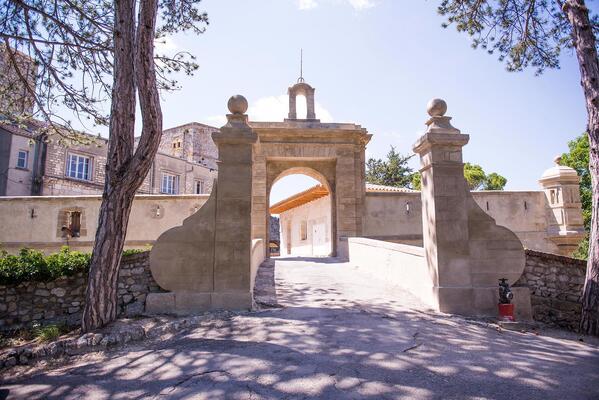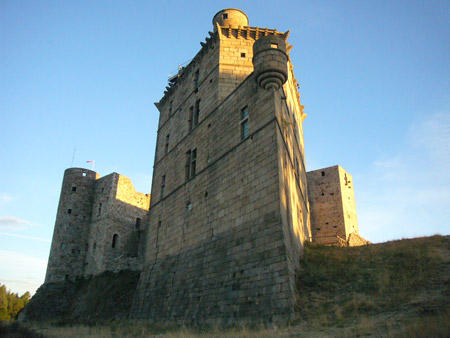ActivitiesALÈS
ALÈS

(c) photo : Direction de la Communication/Ville Alès
Alès is a town in the Gard department of the Occitanie region, just 30 minutes from the Domaine, with plenty of tourist attractions for history, culture and nature lovers.
Visitors can discover the town’s fascinating industrial history by visiting a mine-school that was set up to train young miners in 1945.
The town offers a host of cultural events throughout the year, including Cratère Surface, a festival dedicated to the street performing arts held every year at the end of June/beginning of July, and Estiv’Alès, a rich program of summer events that lasts all summer long.
The Cévennes, a mountain range close to Alès, offers plenty of opportunities for hiking and discovering the local flora and fauna.
If you’re in the area, we recommend a visit to the Fort Vauban, the Château de Portes and the Dinopedia Parc.
All in all, Alès is an interesting tourist destination for lovers of history, culture and nature, offering a variety of activities to suit all tastes.
ACTIVITY SUGGESTIONS
DINOPÉDIA PARC

Would you like to introduce you and your children to the history of the world while having fun?
We suggest you discover the Dinopédia Parc, a leisure park located in La Grand-Combe, which is about 45 minutes from our Eco-Domaine in the Gard – France. This park is obviously about the era of dinosaurs and more particularly about the carboniferous era of the Mesozoic.
You and your children can discover over 100 animated and life-size dinosaur specimens as well as many other fun activities accessible for most of them as from 3 years old. On their website you will find a list of many dinosaurs including a photo animation and the portrait of the dinosaur concerned. Among these activities you will find, the visit of the fossil forest in a small train, a mini adventure course in the middle of the forest, a corridor of time, the zones of excavations and many others. A restaurant is also available on site offering local products, as well as a souvenir store to end your stay in style. What a good time to spend with your family combining games and learning.
LE FORT VAUBAN
(c) photo : Ville d’Alès
Fort Vauban, located in Alès, France, is an impressive castle built in the 17th century under the direction of Sébastien Le Prestre de Vauban, the famous military architect of King Louis XIV. The fort is surrounded by a moat and ashlar ramparts, with bastions and defensive towers that reflect the power and military strategy of the time.
The castle has a wooden drawbridge leading to a massive arched gateway with a portcullis and loopholes for defence. Inside, the barracks buildings with their austere stone facades can be admired, as well as the chapel, the gunpowder magazine and other military buildings that bear witness to the organisation and daily life of the soldiers at the time.
Today, Fort Vauban is a listed historic site and open to the public for guided tours. Visitors can explore the fortifications, learn about the history of military fortification in France and admire the panoramic view of the city from the ramparts. It is an ideal place to visit for lovers of history and military architecture.
LE CHÂTEAU DE PORTES
The Château de Portes is an imposing medieval fortress located in the Occitanie region of France’s Gard department. It was built in the 12th century on a rocky spur overlooking the surrounding valley, and has been enlarged and modified over the centuries.
The castle consists of a three-storey square keep, flanked by four round towers, each with a corbelled turret. The ashlar walls are thick and impressive, and the whole structure is surrounded by a fortified wall with battlements and merlons.
Inside the castle there are many vaulted stone rooms and spiral staircases leading to the different levels. There is also a chapel, a kitchen, a great hall and richly decorated ceremonial rooms. The windows are fitted with stone mullions and stained glass, adding a touch of colour to the whole.
The castle is surrounded by terraced gardens, offering spectacular views of the surrounding valley. It also has a drawbridge, moat and portcullis, bearing witness to its past as an impregnable fortress.
Today, the Château de Portes is open to the public and hosts exhibitions, concerts, cultural events and guided tours to discover its rich historical heritage.

